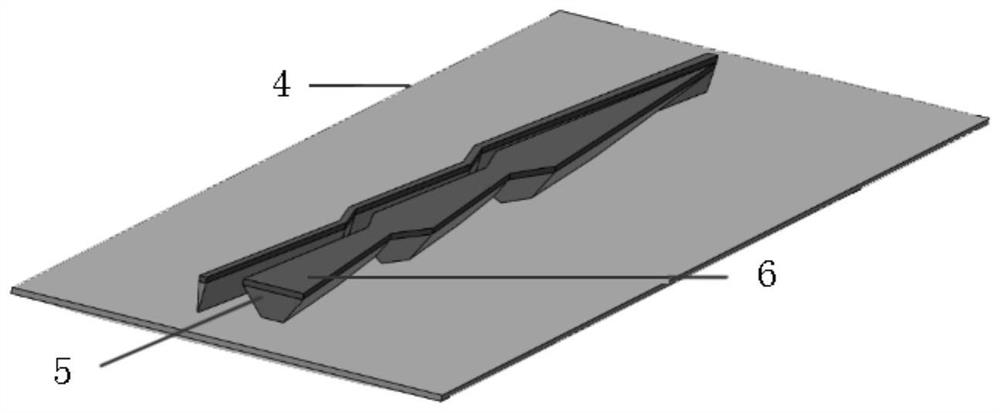A kind of directional passive driving thin film and its preparation method
A directional passive and self-driven technology, applied in the manufacture of microstructure devices, instruments, fluid velocity measurement, etc., can solve problems such as complex process methods, and achieve the effect of simple preparation process
- Summary
- Abstract
- Description
- Claims
- Application Information
AI Technical Summary
Problems solved by technology
Method used
Image
Examples
Embodiment 1
[0054] Step 1: Deposit a layer of 50nm Ti thin film on the glass substrate by magnetron sputtering deposition process.
[0055] Step 2: Write the directional passive driving pattern on the 50nm metal Ti film by laser direct writing technology to obtain a patterned film. Among them, the writing parameters of the laser direct writing technology are: laser power 4mW; laser pulse width 1ms.
[0056] Step 3: immerse the obtained patterned thin film in 4.5% HF diluent for 20 minutes to obtain an oriented passive-driven thin film.
[0057] Step 4: When the water mist is sprayed onto the surface of the prepared directional passive source-driven film, the droplets can move along such as figure 1 Move in the direction indicated by the dotted arrow to realize long-distance transportation.
[0058] Experiments have found that a 50nm Ti film can be completely etched in about 15 minutes, and the TiO obtained by laser oxidation 2 Patterns are preserved. Since the HF diluent has an isotro...
Embodiment 2
[0060] Step 1: Deposit a layer of 200nm Ti thin film on the glass substrate by magnetron sputtering deposition process.
[0061] Step 2: Write the directional passive driving pattern on the 200nm metal Ti film by laser direct writing technology to obtain a patterned film. Among them, the writing parameters of the laser direct writing technology are: laser power 4mW; laser pulse width 1ms.
[0062] Step 3: immerse the obtained patterned thin film in 4.5% HF diluent for 100 min to obtain an oriented passive-driven thin film.
[0063] Step 4: When the water mist is sprayed onto the surface of the prepared directional passive source-driven film, the droplets can move along such as figure 1 Move in the direction indicated by the dotted arrow to realize long-distance transportation.
Embodiment 3
[0065] Step 1: Deposit a layer of 20nm Ti thin film on the glass substrate by magnetron sputtering deposition process.
[0066] Step 2: Write the directional passive driving pattern on the 20nm metal Ti film by laser direct writing technology to obtain a patterned film. Among them, the writing parameters of the laser direct writing technology are: laser power 4mW; laser pulse width 1ms.
[0067] Step 3: immerse the obtained patterned thin film in 4.5% HF diluent for 10 minutes to obtain an orientation passively driven thin film.
[0068] Step 4: When the water mist is sprayed onto the surface of the prepared directional passive source-driven film, the droplets can move along such as figure 1 Move in the direction indicated by the dotted arrow to realize long-distance transportation.
[0069] Compared with the anisotropic surface produced by chemical gradients in the prior art, which leads to slow movement speed and limited long-distance transport distance of droplets, the pr...
PUM
| Property | Measurement | Unit |
|---|---|---|
| thickness | aaaaa | aaaaa |
Abstract
Description
Claims
Application Information
 Login to View More
Login to View More - R&D
- Intellectual Property
- Life Sciences
- Materials
- Tech Scout
- Unparalleled Data Quality
- Higher Quality Content
- 60% Fewer Hallucinations
Browse by: Latest US Patents, China's latest patents, Technical Efficacy Thesaurus, Application Domain, Technology Topic, Popular Technical Reports.
© 2025 PatSnap. All rights reserved.Legal|Privacy policy|Modern Slavery Act Transparency Statement|Sitemap|About US| Contact US: help@patsnap.com


